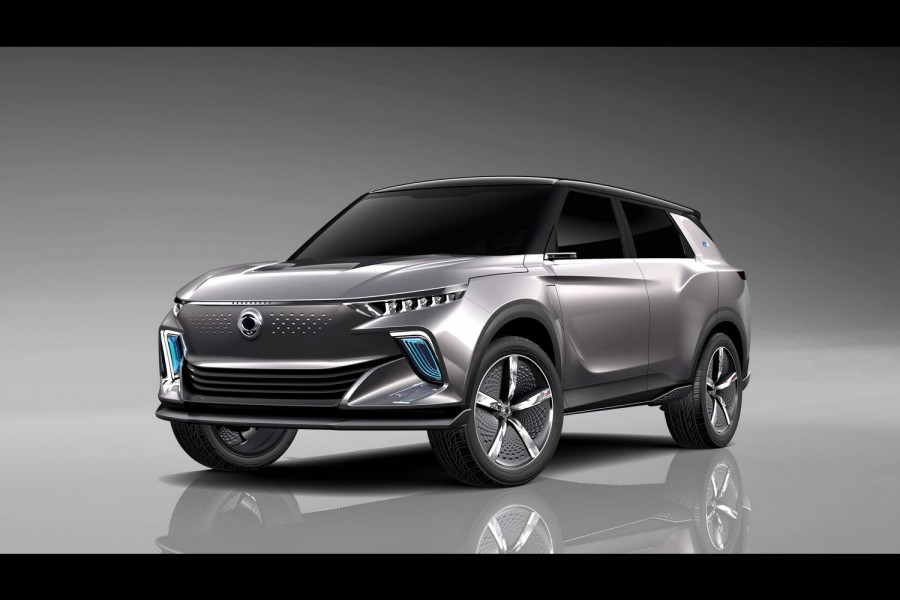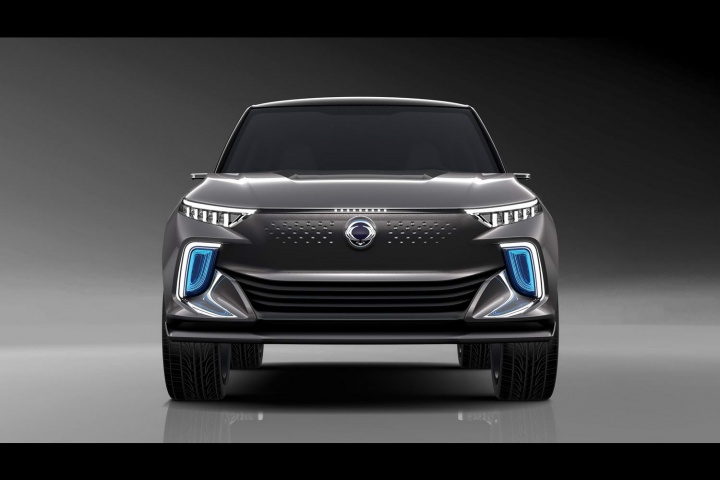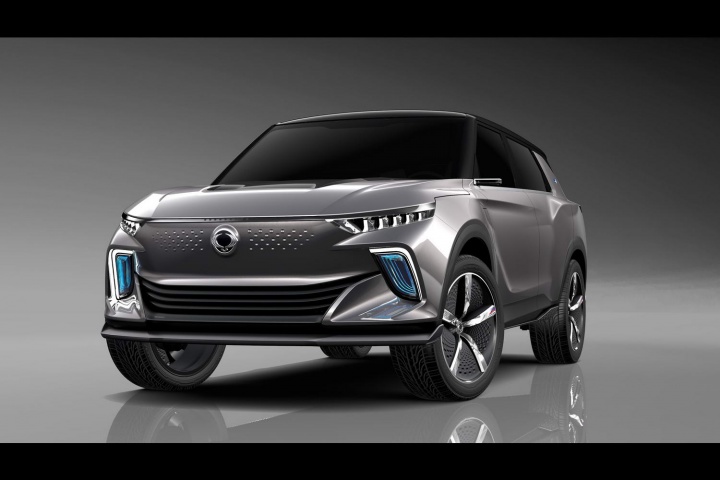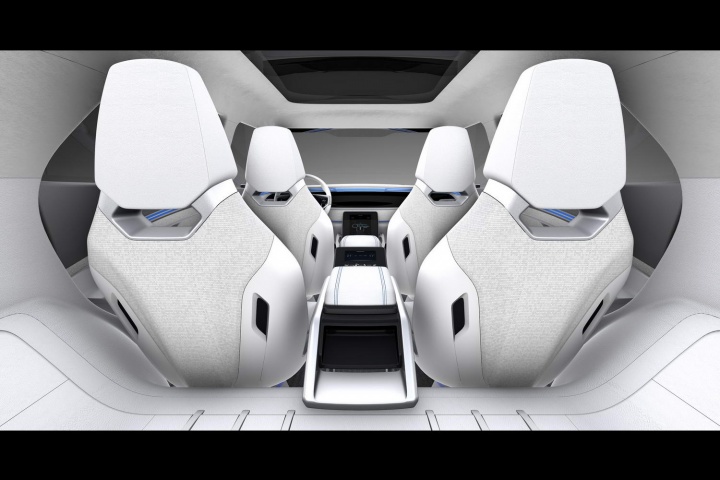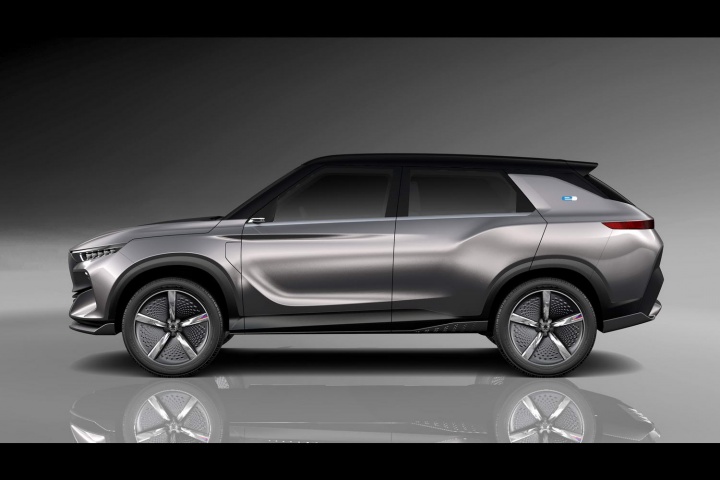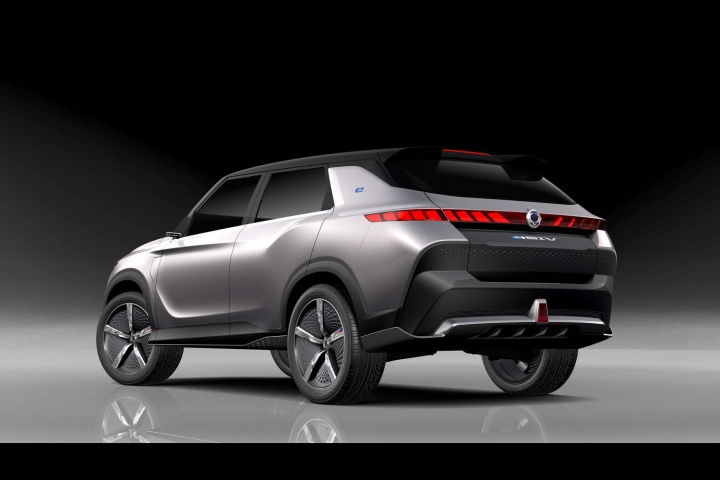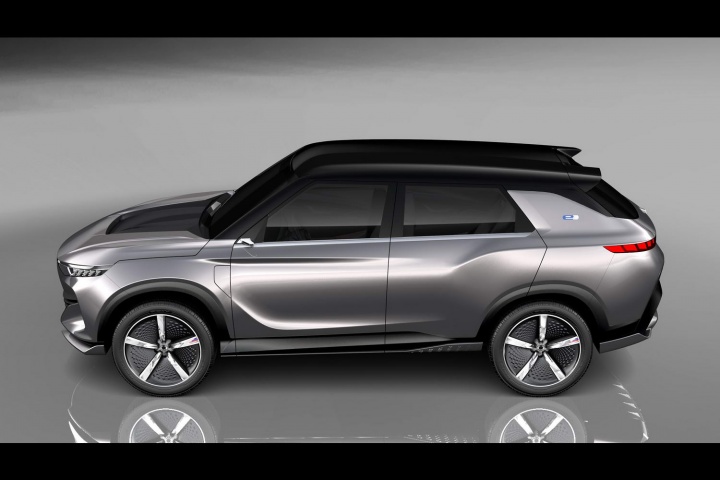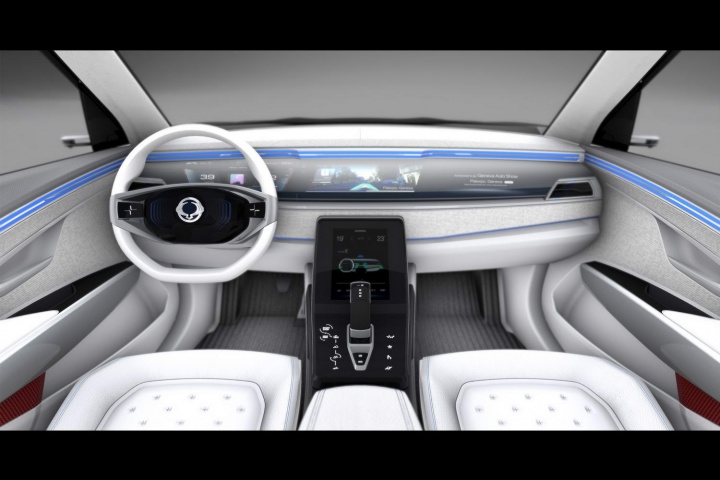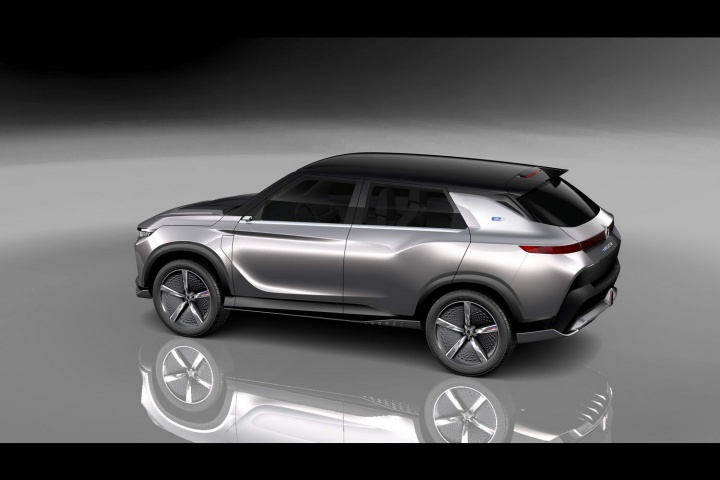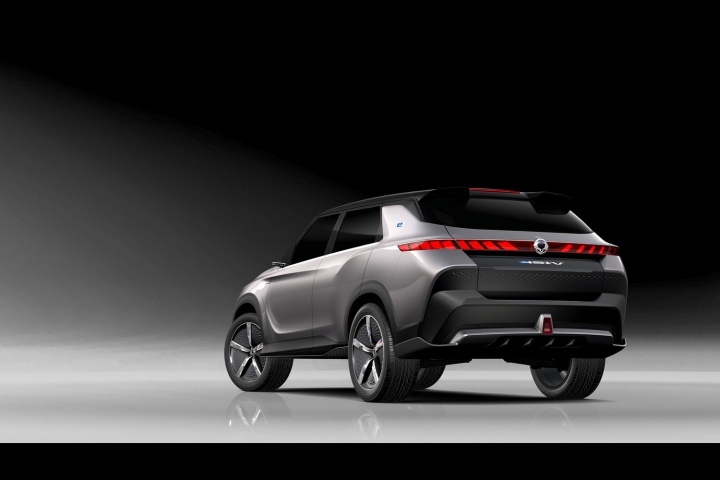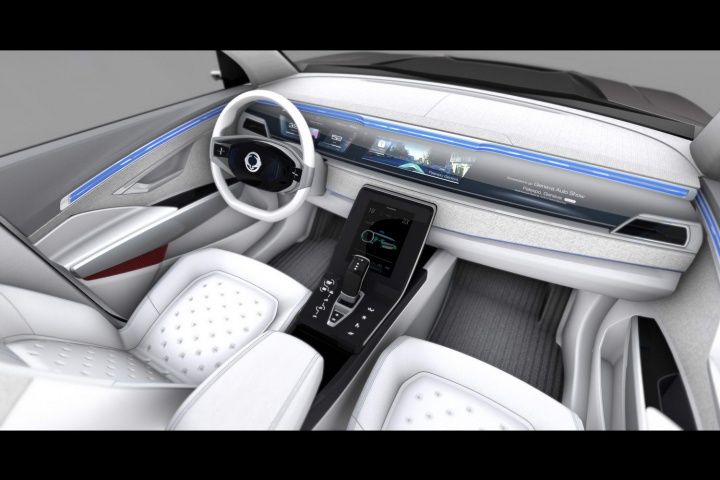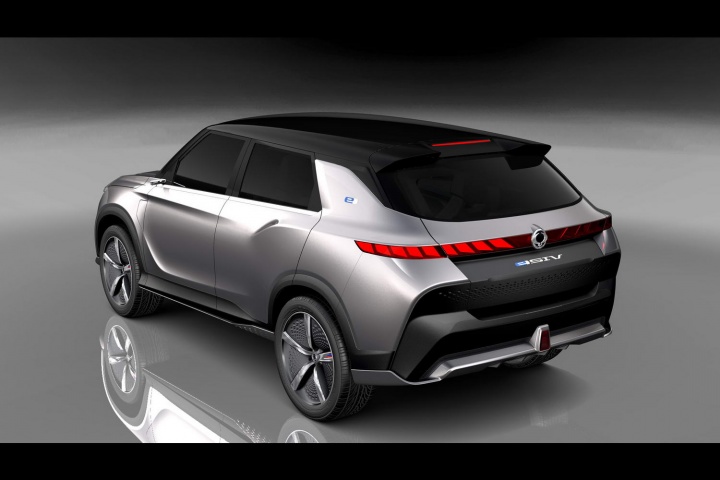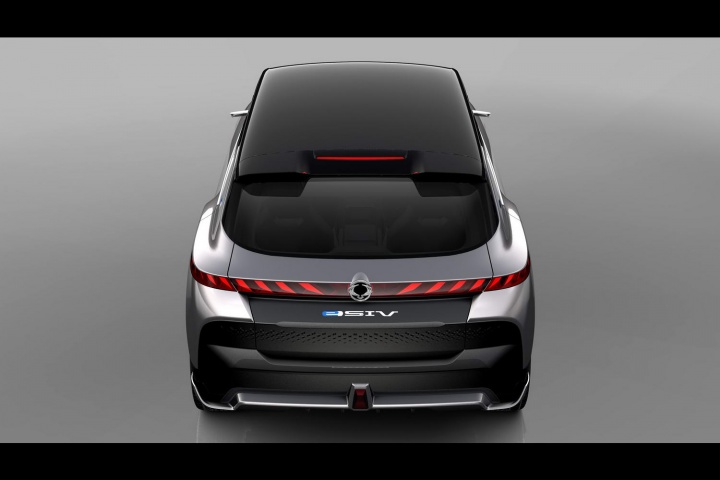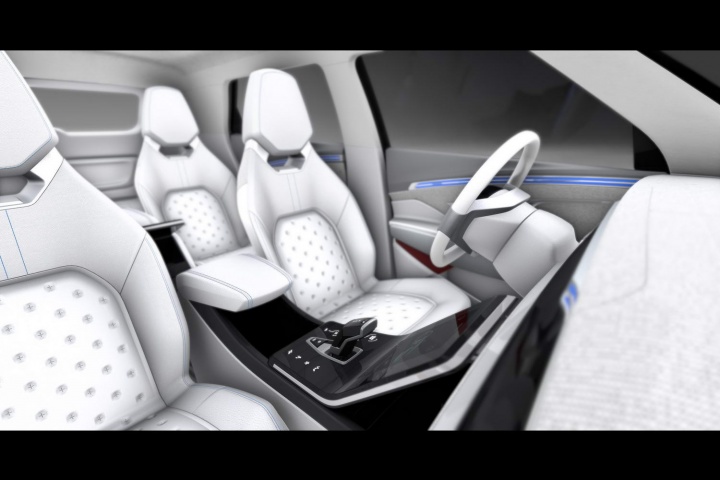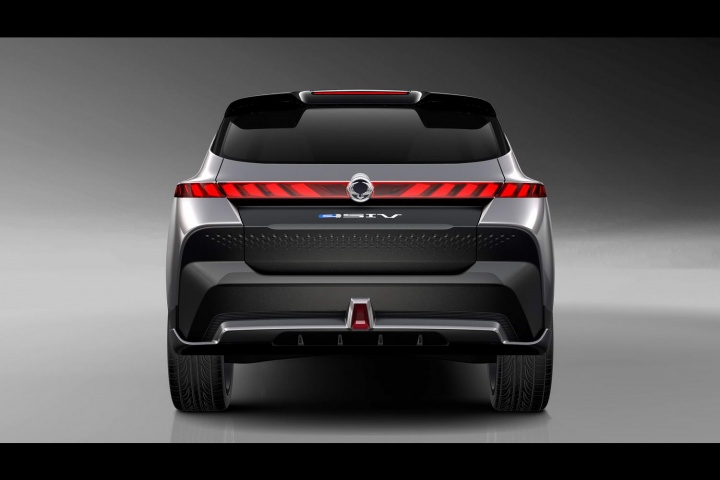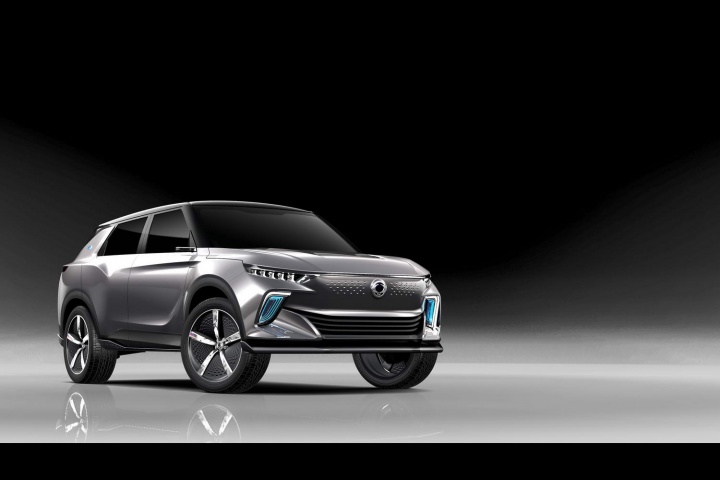What's the news?
SsangYong has dabbled in EV concepts before, most recently with the Tivoli EV-R which we saw in Geneva in 2015. The e-SIV (which stands for Electronic Smart Interface Vehicle) is the company's latest attempt to show off their work in the field of EVs, driver autonomy and connectivity.
It's a handsome looking thing, with strong, bold lines; rear flanks echoing its Tivoli stablemate and a strip of LED lighting running across the back. The "new horizon, smart dynamism" design concept (whatever that means) does, according to SsangYong, "articulate the future look for SsangYong electric SUVs". Considering that the e-SIV falls into the C-segment, it's possible that the concept offers a glimpse of SsangYong's Korando replacement.
The interior is bright and airy with a big expanse of information display and user interface running door to door along the dash. According to the company, "the instrument cluster communicates information and messages via clear graphics suitable for self-driving and fully optimised for future connectivity." More of that anon. There's seating for two in the back and a screen in the centre console which shares information with the rear-seat passengers. There are light, soft materials used throughout and strips of blue ambient lighting trimming the instrument panel and doors.
There is some, perfectly realistic, driver autonomy in the e-SIV. Using radar and a camera sensor system, the Stage 2 technology keeps the car in lane and a safe distance from the car in front on motorways. With the addition of a third sensor, Stage 3 autonomy can be achieved.
The e-SIV is very much a "connected car" in three respects. Firstly, electric charging can be monitored using a smartphone app which can also calculate the driving range and hence, best route based on the level of battery charge. The concept has a useful range of 320 - 450km and, on a fast charge, can reach 80 per cent battery capacity in 50 minutes. Secondly, using telematic technology, a number of functions can be operated remotely including among other things, turning the power on and off, the air-conditioning and car's diagnostics. The third element to the e-SIV's connectivity is the infotainment system which uses voice recognition technology and "works through partnerships to manage music, radio and inter-connected home control."
According to the company: "The SsangYong aspiration has been to build a car with a smart interface that fuses perfectly with the very latest technology to become a mobile communication space. Through machine learning-based voice recognition, the internet and state-of-the-art autonomous navigation, SsangYong will create a car for people and the future."

